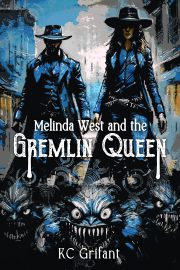Key Conditions for Reader Suspense:
Part 3 – It’s gotta be difficult
by John D. Brown.
In my last post I explained the three types of problems that lead to reader suspense. But it’s not enough to give a character a problem.
Let’s go back up to the objective. We want to HOPE and FEAR for the character. We don’t know what WILL happen but suspect or know what MIGHT and we worry and feel tension about the possibilities. We want to worry, and we want that worry to build to a pitch. We then want to experience a cathartic release.
How will we FEAR if the problem is so easy anybody could fix it? How will we WORRY if the lead has all the odds stacked in his or her favor? How will we feel UNCERTAIN if we know exactly what’s going to occur?
I can’t worry for Frodo, for example, if all he has to do is cast the naughty ring into the pit of doom that lies on the other side of his street. I can’t worry about a guy finding a girl to love and who will love him, and have that worry build to a sharp edge-of-your-seat point, if all he has to do is proclaim his feelings and the girl immediately rushes to him forever.
The facts are that we won’t feel fear, worry, or uncertainty unless the problem is HARD to solve. I’ll discuss the Pareto factors for making problems hard to solve when I talk about plot. Just know for now that difficulty is a requirement for suspense.
Problem Intensifiers
Besides being hard, problems need to be urgent. I’ve identified four factors that seem to intensify the nature of the problem: probability, immediacy, significance, and specificity.
1. Probable
It’s one thing to face the one-in-a-gazillion chance that I might be trampled by a herd of elephants when I walk out of the door. It’s quite another to know that the last seven people who walked out of the door were killed by the madman with the AK-47 sitting at the end of the hall.
The higher the probability of the threat or loss of opportunity, the more intense the problem becomes because it’s more likely I’ll lose. No probability and I have nothing to FEAR.
2. Immediate
It’s one thing to know an asteroid will hit the earth and kill us all in 7,000 years. It’s quite another to know it will hit in three days.
The more immediate the problem, the less likely I’ll be able to solve it. The less likely my chances are, the more I’ll WORRY. Give us 2,000 years, and I’m sure we’ll figure out the asteroid thing. Give us three days, and that’s probably cutting it too close. This is why setting up a time limit, a ticking clock or ticking time-bomb, can ratchet up the audience’s tension. Of course, it has to be a short time limit. You can’t start the bomb ticking, and give the lead 45 years to disarm it.
3. Significant
We talked about this before. It’s one thing to face the kidnapping of my pet spider. It’s quite another to face the kidnapping of my child. Significance increases when more is put at risk.
The more significant the threat or opportunity, the more invested I become. The more I FEAR to lose.
4. Specific
It’s one thing to say that something bad is going to happen. It’s quite another to know that kidnappers are going to cut your finger off with a pair of wire cutters. It’s one thing to have someone say something good will happen (Chinese fortune cookie) and quite another to say your uncle just died and left you a million dollars, but you have to fight your three cousins for it.
The more specific the problem, the easier it is for us to see the specific possibilities and react to them with HOPE and FEAR. Generalities don’t trigger emotions. Striking snakes do, though. As do garbage disposals that are turned on just when you reach in to get the baby’s pacifier.
Another part of this is to make the threat specific to the hero. It’s one thing to say a lot of people in the United States or Russia or India are going to die. It’s another to say the hero will lose his own child or wife in the event. In fact, the loss of one child can make the problem more intense that the loss of thousands.
This is not to say you can’t write about threats to large groups of people. That’s one of the ways to broaden the scope of the problem and make it more significant. It’s just that problems become more intense the closer they come to home. Things that threaten us personally, or those we love, raise more fears than those that threaten people we don’t know. A flood raging in the next county is different than the one coming down our street. So in story, the more personal you make the threat to the person we’ve invested in, the more intense the threat will be.
I think we’ll end here. While problems have to be hard to solve and grow in intensity, the reader can’t know how it’s all going to end. They must feel uncertainty. Remember: we don’t want them to know what’s going to happen. We want them to know what MIGHT happen and worry about the possibilities. That’s the topic of the next post.
Happiness,
John
—
John Brown is an award-winning novelist and short story writer. Servant of a Dark God, the first book in his epic fantasy series, was published by Tor Books and is now out in paperback. Forthcoming novels in the series include Curse of a Dark God and Dark God’s Glory. He currently lives with his wife and four daughters in the hinterlands of Utah where one encounters much fresh air, many good-hearted ranchers, and an occasional wolf.
For a list of all of the posts in this series, click on the “John Brown” tag.



